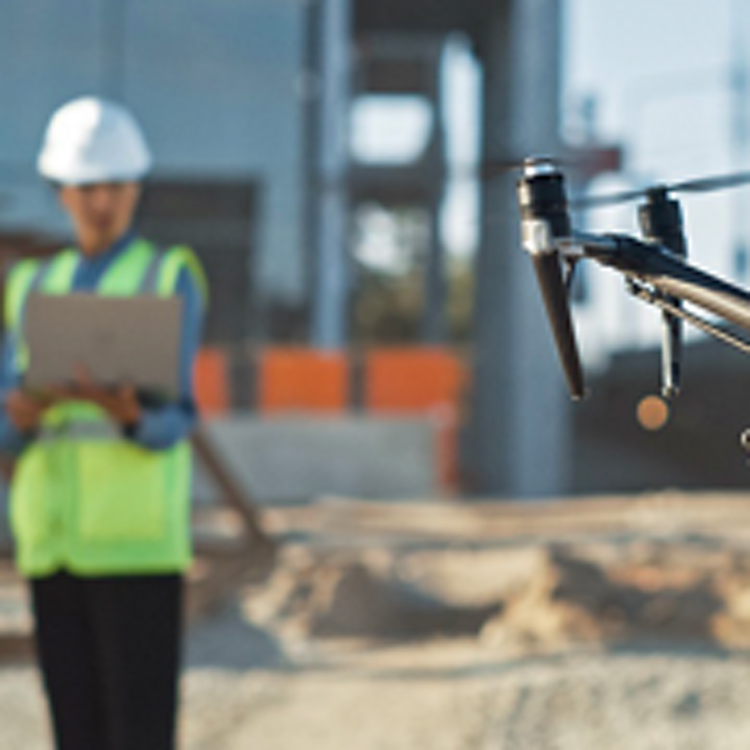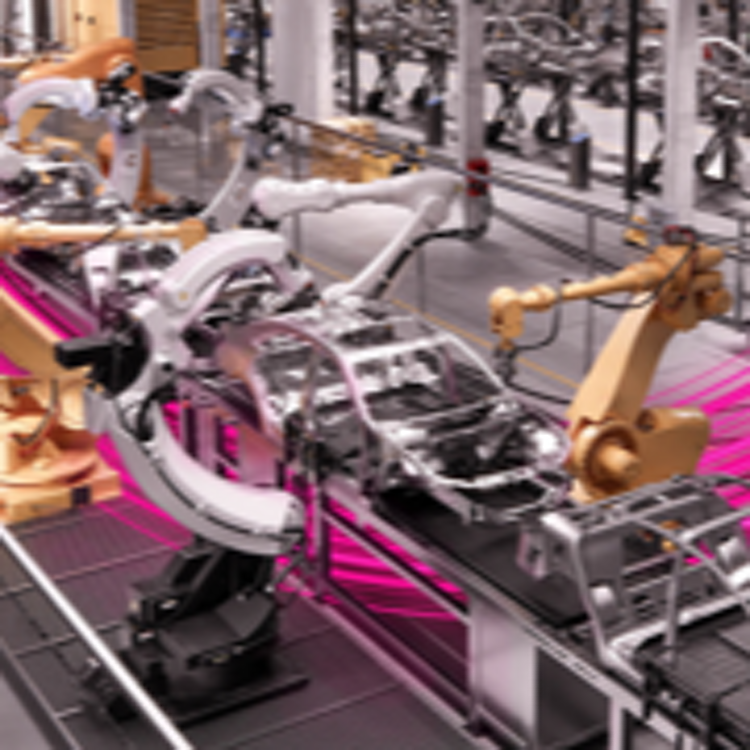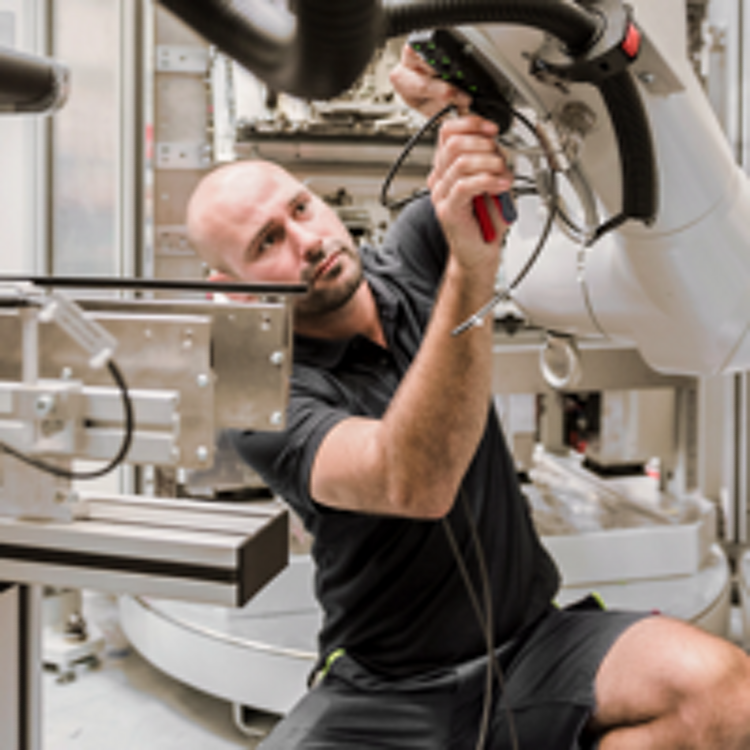APPROACHING ZERO


Welcome to the era of intelligence. Businesses of every type and size are asking themselves how they can use AI to work smarter, slash costs, and improve experiences for their customers and employees. Now, combined with 5G, AI can be even more of a transformative force—think robots that work alongside humans in a factory or video analytics that identify safety issues before workers enter a hazardous area.
6 minute read
● Deep learning models can assist manufacturers with predictive maintenance, help retailers with inventory, and even suggest treatments to medical researchers.
● 5G provides more bandwidth for sharing data with AI models, leading to more valuable insights.
Connectivity and AI have a symbiotic relationship. As wireless technology advances, more things—sensors, devices, people—can connect and inform what’s next. 5G provides more bandwidth for sharing data with AI models, leading to more valuable insights. When AI is combined with multi-access edge computing (MEC), automated systems can react to changes in near-real time, thanks to 5G’s low latency. 5G and AI together open a whole new realm of possibilities, where businesses can arrive at better decisions, faster.
Today, data can be sent over a 5G network at speeds about 3x faster than 4G/LTE, which will get even faster as 5G matures. But to create responsive systems, latency is just as important. Latency is the transmission time for a packet of data sent from one point to another. Any lag in connectivity can slow down a system, making it impractical to deploy applications like industrial robots or automated guided vehicles (AGVs) that need to react immediately to changes in their environment—for example, by slowing or stopping when a human is present.
5G and IoT combined can connect more users and devices than 4G/LTE. This is an essential part of achieving massive IoT, an environment in which thousands or even millions of things are connected and sharing data. #5GHQ
Latency is critical to 5G-enabled use cases that the 3GPP standards group has outlined specific design features for ultra-reliable low-latency communications (URLLC). The idea is that URLLC will support critical IoT applications that have strict reliability and latency requirements, like self-driving vehicles and industrial robots—both powered by AI.
5G also has considerably more capacity than previous generations of cellular connectivity. With more access to radio spectrum, 5G and IoT combined can connect more users and devices than 4G/LTE. This is an essential part of achieving massive IoT, an environment in which thousands or even millions of things are connected and sharing data.



The business world has been using AI in the cloud for several years now. Trained by more data points than a human could consume, let alone understand, deep learning models are making little discoveries and informing big insights across industries. AI is helping manufacturers predict when maintenance is needed, telling retailers which inventory will sell best, and revealing to medical researchers which treatments are the most effective.
With the high capacity and bandwidth enabled by 5G, AI models can process complex data sets from more inputs than ever before. Here are a few examples of how it might be used in different industries.
The percentage of companies currently using 5G to help with product innovation:
48%
used AI in 2022
60%
plan to use AI in 20231
Smart factories that run on automation.
On the factory floor, dozens of cable-free, 5G-connected robots can roam from one production line to the next, lifting heavy objects and picking the right parts. A fleet of AGVs can move around the factory or between sites without running into each other or human workers. Hundreds or thousands of cameras can monitor the assembly of a product, sharing their aggregate data with AI models on an edge server to automatically recognize defects or other quality issues.
It’s worth mentioning that some industrial systems may use on-device AI—for example, a robotic arm equipped with a special chip for machine vision. In these cases, there’s no need for connectivity to run AI on the device itself, although you may want to send data to the cloud to update the AI model. However, in a 5G-connected environment, data from across a factory of devices, machines, and robots can leverage AI models to identify new efficiencies and calibrate operations as needed.
Safer and more secure construction sites.
In construction, each site is a unique and dynamic work environment. 5G can help map danger zones on the worksite or enable real-time video monitoring of changes in the weather that could impact a project. Specialized bots inspect places that are hard or unsafe for humans to access. By connecting nearly everything, 5G can also make it easier to use AI-driven computer vision to monitor equipment, detect trespassing or theft, or even see whether workers are wearing their safety gear.
More efficient commercial trucking.
With a 5G-connected fleet of commercial vehicles sharing data about road and traffic conditions to the cloud, AI can help optimize their routes in near-real time, cutting down on travel time and fuel costs. Soon, AI-powered autonomous fleets may lighten the load on commercial drivers, who can essentially become remote operators. This will rely on massive numbers of devices all transferring data back to an operations center, which 5G will be able to easily handle. Self-driving trucks can increase system capacity by operating around the clock, completing a greater number of shipments in less time.
Better health outcomes for patients.
In healthcare, having the right information can impact patients’ quality of care. 5G and AI will help enable the Internet of Medical Things (IoMT), in which data about vitals, patient behavior, device usage, and more is collected and analyzed. Providers can intervene and modify treatments, preventing visits to the emergency room or hospitalization. Over the long term, the data collected by 5G-enabled devices can be fed into AI models to help researchers recognize trends and anomalies, so that providers can treat patients earlier.

Anywhere from hundreds to millions of data points are needed to train an AI model, teaching it how to make decisions. But AI can get even better with time and experience. By sending new data to models, businesses can further refine and enhance their decision-making.
For example, retailers can improve their merchandising strategies based on customer engagement as measured by video analytics, or smart cities can better manage traffic flow by monitoring trends at busy intersections.
When the forces of connectivity and intelligence are combined, we can rely on technology to give us deeper insights and act on them faster. For business, it means perennial benefits like greater operational efficiencies, safer work environments, and a healthier bottom line—to name a few.
1